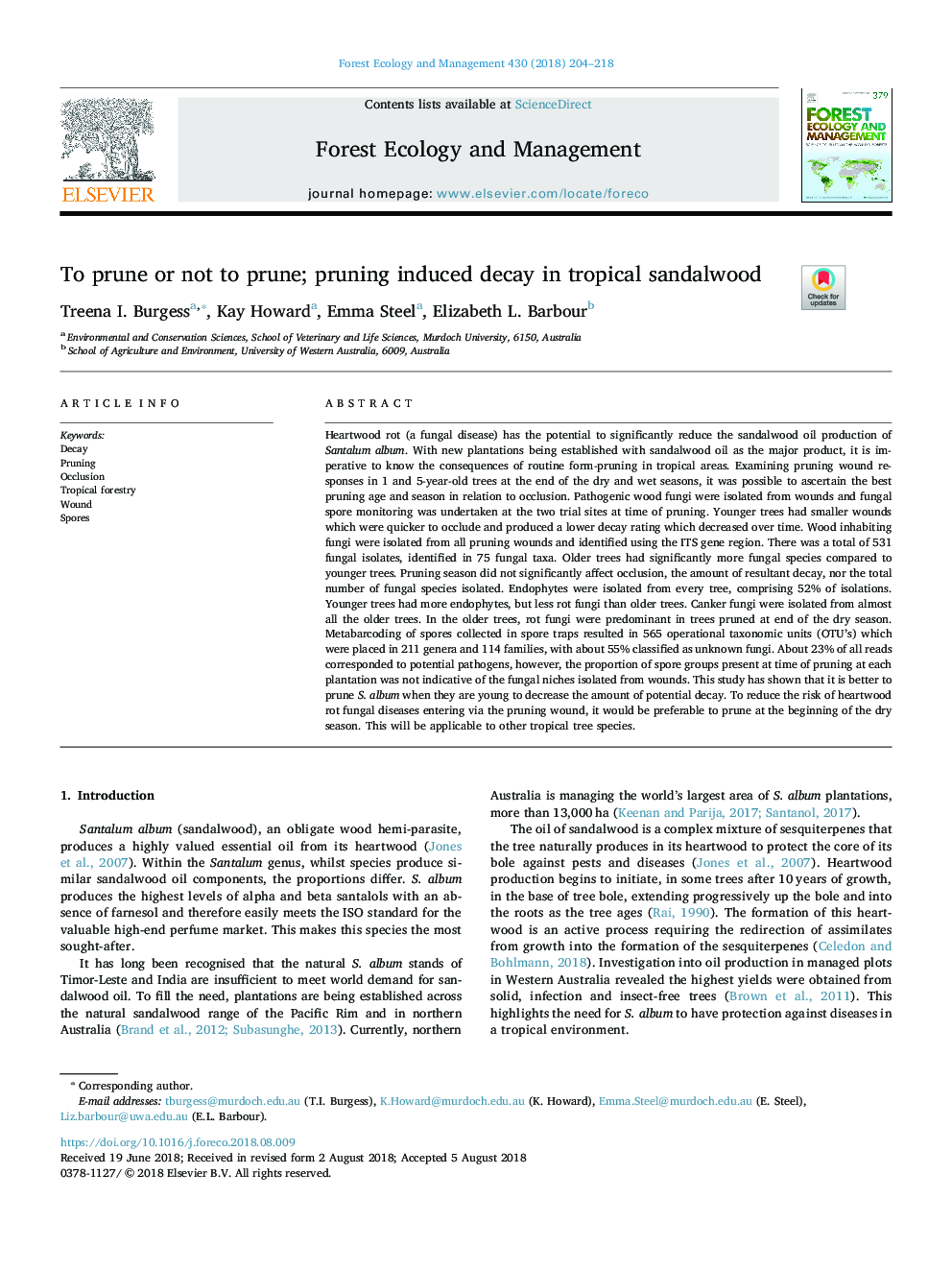| کد مقاله | کد نشریه | سال انتشار | مقاله انگلیسی | نسخه تمام متن |
|---|---|---|---|---|
| 6541407 | 1421330 | 2018 | 15 صفحه PDF | دانلود رایگان |
عنوان انگلیسی مقاله ISI
To prune or not to prune; pruning induced decay in tropical sandalwood
ترجمه فارسی عنوان
برای بریاندن یا نه بری؛ هیزم فرسایش ناشی از چوب صندل گرمسیری
دانلود مقاله + سفارش ترجمه
دانلود مقاله ISI انگلیسی
رایگان برای ایرانیان
کلمات کلیدی
افتادن هرس کردن وقوع، جنگل گرمسیری، زخم، اسپورها،
موضوعات مرتبط
علوم زیستی و بیوفناوری
علوم کشاورزی و بیولوژیک
بوم شناسی، تکامل، رفتار و سامانه شناسی
چکیده انگلیسی
Heartwood rot (a fungal disease) has the potential to significantly reduce the sandalwood oil production of Santalum album. With new plantations being established with sandalwood oil as the major product, it is imperative to know the consequences of routine form-pruning in tropical areas. Examining pruning wound responses in 1 and 5-year-old trees at the end of the dry and wet seasons, it was possible to ascertain the best pruning age and season in relation to occlusion. Pathogenic wood fungi were isolated from wounds and fungal spore monitoring was undertaken at the two trial sites at time of pruning. Younger trees had smaller wounds which were quicker to occlude and produced a lower decay rating which decreased over time. Wood inhabiting fungi were isolated from all pruning wounds and identified using the ITS gene region. There was a total of 531 fungal isolates, identified in 75 fungal taxa. Older trees had significantly more fungal species compared to younger trees. Pruning season did not significantly affect occlusion, the amount of resultant decay, nor the total number of fungal species isolated. Endophytes were isolated from every tree, comprising 52% of isolations. Younger trees had more endophytes, but less rot fungi than older trees. Canker fungi were isolated from almost all the older trees. In the older trees, rot fungi were predominant in trees pruned at end of the dry season. Metabarcoding of spores collected in spore traps resulted in 565 operational taxonomic units (OTU's) which were placed in 211 genera and 114 families, with about 55% classified as unknown fungi. About 23% of all reads corresponded to potential pathogens, however, the proportion of spore groups present at time of pruning at each plantation was not indicative of the fungal niches isolated from wounds. This study has shown that it is better to prune S. album when they are young to decrease the amount of potential decay. To reduce the risk of heartwood rot fungal diseases entering via the pruning wound, it would be preferable to prune at the beginning of the dry season. This will be applicable to other tropical tree species.
ناشر
Database: Elsevier - ScienceDirect (ساینس دایرکت)
Journal: Forest Ecology and Management - Volume 430, 15 December 2018, Pages 204-218
Journal: Forest Ecology and Management - Volume 430, 15 December 2018, Pages 204-218
نویسندگان
Treena I. Burgess, Kay Howard, Emma Steel, Elizabeth L. Barbour,
